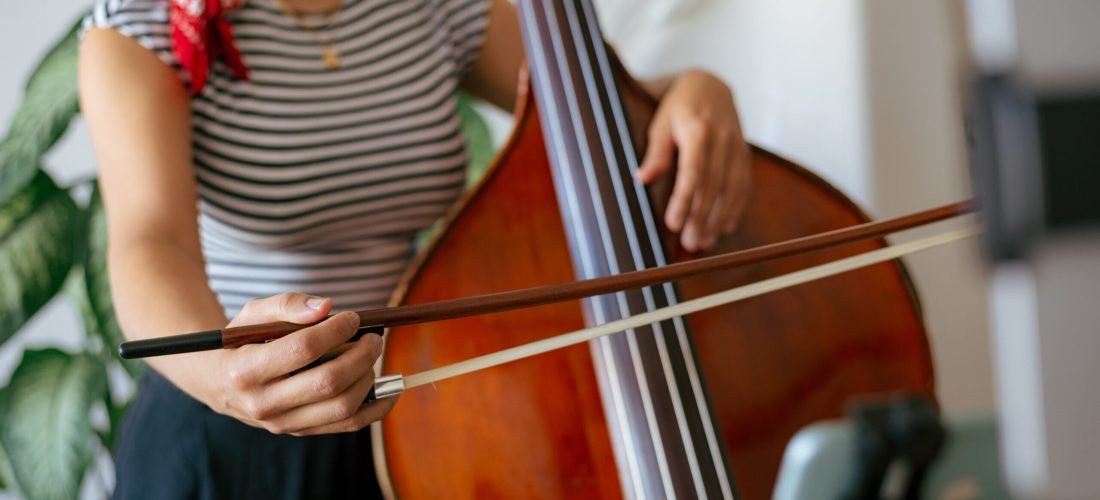
String Crossings: from dragging furniture to clear articulation on the double bass
Let’s work on string crossings on the double bass to get clean articulation. When we face passages with many crossings—the ones that feel like a relief because all the notes stay in one position and seem “easier” since we don’t shift much—we often discover that the real challenge is definition. Most of the time, what we play isn’t clear at all, and that’s frustrating. A not-so-friendly acquaintance used to say: “It sounds like you’re dragging a piece of furniture.” Ha!
To improve string crossings on the double bass, we need to add two key points:
1.It’s crucial to keep a narrow angle between the bow hair and the strings—stay close to the next string (see the video below for a clearer idea). In short: avoid exaggerated, unnecessary bow movements.
2.Be aware of how much weight and bow speed each string needs to vibrate properly, because they don’t all respond the same way. It sounds simple, but this changed the way I see the double bass.
I still remember the first time I heard this phrase: “Not all strings react the same.” It was in a masterclass (my very first) with Edicson Ruiz, a great soloist and double bassist of the Berlin Philharmonic. I had been playing for four years and used to practice for hours “until the passage came out,” but without much awareness of what I was doing.
In that session I began to understand that we need awareness in every movement; understanding how the instrument reacts changed everything. Not long after, I decided to move to my country’s capital to study with Félix Petit, who had taught Edicson and many other great Venezuelan double bassists. Best decision I could have made.
So, if not all strings react the same, how do we get an even, defined sound? With patience! Haha—let me explain the idea.
How to adjust bow weight and speed depending on the string?
Thinner strings, like the G, require less weight but more speed and “air” in the bow to project a clear, resonant sound. Thicker strings, like the E, ask for the opposite: more weight and less bow speed so the sound is focused and deep.
If we don’t make this adjustment, our sound becomes muddy and undefined. That’s where all the memes about the double bass “dragging furniture” come from—there’s no clarity in the articulation (see the video below to make this clearer).
This can be challenging, especially in fast passages. Changing this “mental chip” in the middle of a performance doesn’t happen instantly, but it’s something we need to build.
Spend time exploring the instrument and analyzing how each string responds using different combinations of weight, speed, and contact point. It will make a big difference in your technique and your musicality.

